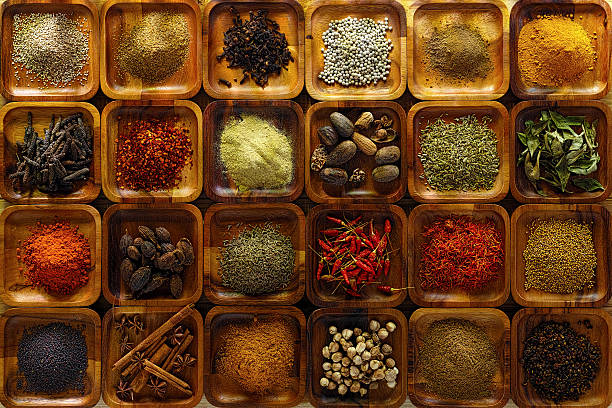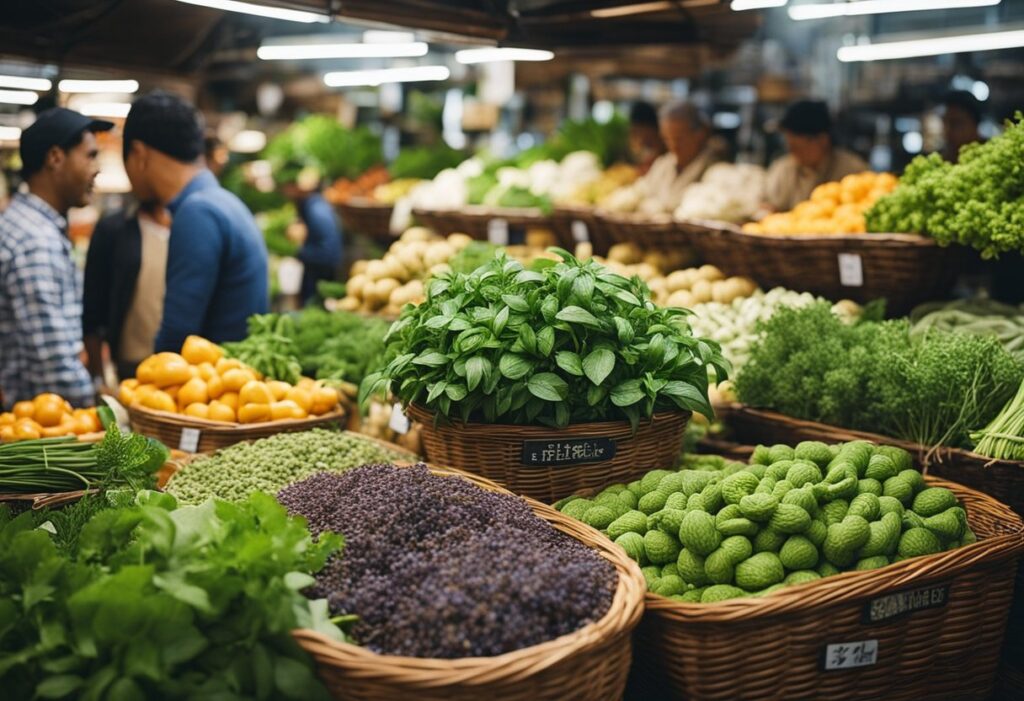Supplements and Herbs
Why Are Herbs So Expensive?
Herbs are an important component of many cuisines around the world, giving distinctive flavors and fragrances to foods. They are also utilized for therapeutic applications, ranging from stress relief to infection treatment. However, the exorbitant expense of herbs can deter many people from incorporating them into their daily life. This essay will look at why herbs are so expensive and what factors contribute to their high cost.
Herbs are expensive in part because they are frequently grown organically, without the use of pesticides or other chemicals. Organic farming processes are more labor-intensive and demand more resources, raising output costs. Herbs are also frequently planted in tiny amounts, making them more expensive to produce than other crops farmed on a bigger scale.
Herbs’ fragility is another element that adds to their high price. Many herbs have a short shelf life and must be collected and delivered as soon as possible to keep their freshness. This necessitates specific equipment and shipping methods, both of which can be expensive. Furthermore, some herbs are only available during specific seasons, which can push up prices when demand is high and supply is limited.

Understanding the High Cost of Herbs
We may be shocked by the high cost of herbs when we go to the grocery shop or a health food store. In this part, we’ll look at some of the factors that contribute to the high cost of herbs.
Role of Origin and Trade Routes
Herb prices can vary greatly depending on where they are grown. Some European herbs, such as lavender, rosemary, and thyme, for example, can be more expensive in North America due to import costs. Herb prices are also influenced by historical spice trade routes that transported herbs from Asia and the Middle East to Europe. Arab traders brought saffron, cinnamon, and ginger from India and Iran to Spain, France, and the United Kingdom. Because the trading routes were long and risky, the herbs were scarce and expensive.
Influence of Growing and Harvesting Conditions
Herb cultivation might also affect their cost. Some herbs, for example, are difficult to grow because they require specific circumstances such as soil type, temperature, and sunlight. Herbs cultivated in greenhouses or on small farms may be more expensive due to greater production costs. Herb harvesting can also be labor-intensive, which raises the expense.
Impact of Quality Control and Adulteration
Another element that can influence the price of herbs is quality control. Herbs produced and harvested in a controlled setting, as well as those verified for purity and potency, can be more expensive. Herbs that have been adulterated or polluted with other chemicals, on the other hand, may be less effective or even hazardous. As a result, it is critical to buy herbs from recognized vendors who test their products for quality and purity.
Finally, the high cost of herbs can be ascribed to a variety of variables such as their origin, cultivation, harvesting, and quality control. By understanding these variables, we can make informed selections when purchasing herbs and ensure that we are getting high-quality, cost-effective goods.

Comparing Herbs and Spices
Herbs and spices are crucial elements in cooking since they bring taste, scent, and color to our dishes. While certain herbs are quite inexpensive, many spices can be rather costly. In this section, we will look at the price differences between herbs and spices, as well as the specific characteristics of pricey spices.
Price Difference Between Herbs and Spices
One of the primary reasons spices are more expensive than herbs is the manner in which they are grown and harvested. Saffron, for example, is one of the most costly spices in the world since it is generated from the stigmas of the crocus flower, which must be hand-picked and dried. One pound of saffron requires roughly 75,000 blooms, which is why it is so expensive.
Other spices, such as vanilla, cardamom, and cinnamon, are likewise highly costly due to the labor-intensive process of cultivation and harvesting. Vanilla, for example, is made from the vanilla orchid’s seed pods, which must be hand-pollinated and cured for several months before they can be used.
Unique Aspects of Expensive Spices
Aside from the labor-intensive process of growing and harvesting them, pricey spices have distinct qualities that make them more precious than herbs.
Turmeric, another spice popular in Indian and Chinese cuisine, is prized for its vivid yellow color and medicinal benefits. Turmeric has been used in traditional Chinese and Ayurvedic medicine for ages to treat a wide range of diseases, including inflammation, digestive disorders, and skin problems.
To summarize, while both herbs and spices are necessary components in cooking, spices are more expensive due to their distinctive qualities and the labor-intensive procedure involved in their growth and harvesting.

The Supply Chain of Herbs
The supply chain is critical when it comes to the high cost of herbs. Many factors influence the final price of herbs, from manufacturing to shop shelves.
From Production to Store Shelves
Herbs travel from manufacturing to store shelves via a complex procedure involving numerous entities. It begins with the cultivation of herbs on farms, which necessitates the use of labor and resources. Spice companies gather, process, and package the herbs before shipping them to retailers. Many factors can influence the price of herbs along the process, including weather, labor shortages, and transportation expenses.
Labor is an important aspect in herb production. The costs vary based on where the farm is located and how many workers are available. Labor shortages can drive up the cost of herbs in some circumstances.
Another element that can influence the price of herbs is transportation costs. Shipping herbs from the farm to the spice firm and then to the store can be costly, especially if the herbs must travel vast distances.
The Role of Packaging and Labeling
The cost of herbs is also affected by packaging and labeling. To keep herbs fresh and potent, the container used to store them must be of good quality. This can raise the price of herbs.
Labeling is also crucial since it informs customers about the herbs they are purchasing. Labels must be precise and informative, which necessitates the expenditure of time and resources. This can also raise the price of herbs.
To summarize, the herb supply chain is a complex process involving many distinct entities. Many factors can influence the cost of herbs from production to shop shelves, including labor, shipping, packaging, and labeling. Understanding the herb supply chain allows us to better understand why herbs are so expensive and make more informed purchasing decisions.

Consumer Perspective on Herb Pricing
We as customers frequently wonder why herbs are so pricey. In this section, we will look at the elements that determine the price of herbs and how consumers can make informed purchasing decisions.
Buying Fresh Vs Dried Herbs
When it comes to herbs, customers can choose between fresh and dried herbs. Because of their limited shelf life and the cost of transportation, fresh herbs are frequently more expensive than dried herbs. Fresh herbs, on the other hand, are frequently favored by chefs and home cooks due to their superior flavor and aroma.
Dried herbs, on the other hand, are less expensive than fresh herbs and have a longer shelf life. Dried herbs are also more concentrated than fresh herbs, so a little goes a long way in cooking. Before purchasing fresh or dried herbs, consumers should assess their usage and needs.
Understanding Quality and Price
Higher quality herbs are frequently more expensive since they are grown in perfect conditions and harvested at the appropriate time. Cheaper herbs may be grown in less-than-ideal conditions, resulting in lower-quality, less potent and tasty herbs.
Consumers should also be aware that the cost of herbs varies based on where they are grown and the availability of locally grown products. Herbs grown locally, for example, may be less expensive than imported herbs. Furthermore, because of their scarcity, unusual or exotic herbs may be more expensive.
To mend the strained relationship between price and quality, buyers can consider obtaining herbs from reliable suppliers that provide high-quality herbs at a reasonable price. Customers may verify that they are getting the best value for their money by doing so.
In conclusion, the price of herbs can be determined by a variety of factors such as their freshness, quality, and availability. We may make informed selections as customers if we understand these elements and consider our usage and demands while purchasing herbs.
Safety and Regulatory Challenges in the Herb Market
Herbs are well-known in many cultures and have been utilized for a variety of purposes for ages. However, there are certain safety and regulatory issues with the herb industry that can make it costly.
One of the most significant issues is the lack of herb-use recommendations. Herbs, unlike pharmaceutical medications, are not controlled by the FDA, hence there are no specific standards for their use.
Another issue is the possibility of herb-drug interactions. Many botanicals can interact with prescription medicines, causing major health issues. St. John’s wort, for example, which is commonly used to treat depression, can interact with a wide range of prescription medications, including birth control pills, antidepressants, and blood thinners.
For these issues, attempts have been made to increase control of the herb market. For example, the Dietary Supplement Health and Education Act (DSHEA) of 1994 mandates dietary supplement producers, including herbal supplement makers, to verify that their products are safe and appropriately labeled.
Conclusion
As someone passionate about the culinary world, I’ve come to appreciate that the cultivation, harvesting, and processing of herbs demand careful attention and labor-intensive efforts. Beyond being flavor enhancers, herbs are agricultural products that bear the weight of climate, geography, and human expertise.
While the expense of herbs may occasionally cause a raised eyebrow at the grocery store, it’s essential to recognize the value they bring to our dishes and, by extension, to our health. The aromatic symphony they create isn’t just a sensory delight; it’s a testament to the dedication of farmers, the unpredictability of nature, and the craftsmanship involved in delivering these tiny yet impactful components to our tables.


